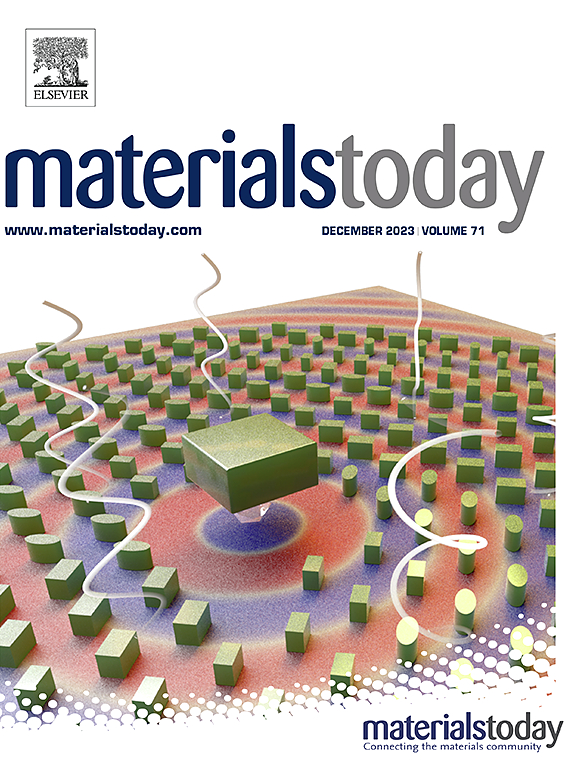高分辨率3D打印应变传感器,具有卓越的拉伸性和灵敏度:揭示熔体电解的潜力
IF 21.1
1区 材料科学
Q1 MATERIALS SCIENCE, MULTIDISCIPLINARY
引用次数: 0
摘要
近年来,柔性应变传感器因其在人体运动检测、健康监测、人机交互等方面具有出色的适应性而备受关注。然而,实现高灵敏度和广泛拉伸性的应变传感器仍然是一个显着的挑战。在此,我们采用熔融电解(MEW),一种尖端的增材制造技术,制造了具有高分辨率和精确设计结构的热塑性聚氨酯(TPU)晶格。随后,通过一层一层的自组装沉积还原氧化石墨烯(rGO),以赋予导电性并利用衬底的微观结构。通过优化结构和参数,实现了具有高测量系数(GF = 3,807.8)和宽工作范围(高达140%)的柔性应变传感器,代表了灵敏度和拉伸性的卓越平衡。该传感器还表现出显著的耐用性,在5000次拉伸和50%应变释放后,性能稳定,电阻变化可以忽略不计。此外,该传感器可以准确检测各种运动,从细微的吞咽动作到大规模的手指和膝盖弯曲,强调了其在可穿戴电子产品中的巨大潜力,并强调了MEW在推进这项技术方面的变革作用。本文章由计算机程序翻译,如有差异,请以英文原文为准。

High-resolution 3D printed strain sensor with superb stretchability and sensitivity: Unveiling the potential of melt electrowriting
Recently, flexible strain sensors have attracted considerable attention due to their outstanding adaptability in applications such as human motion detection, health monitoring, and human–machine interaction. However, achieving strain sensors that integrate both high sensitivity and extensive stretchability remains a notable challenge. Herein, we employed melt electrowriting (MEW), a cutting-edge additive manufacturing technology, to fabricate a thermoplastic polyurethane (TPU) lattice with high-resolution and precisely designed structures. Subsequently, reduced graphene oxide (rGO) was deposited via layer-by-layer self-assembly to impart conductivity and leverage the substrate’s microstructure. Through optimizing structure and parameters, a flexible strain sensor with a high gauge factor (GF = 3,807.8) and a broad working range (up to 140%) has been achieved, representing an exceptional balance of sensitivity and stretchability. The sensor also shows remarkable durability with stable performance and negligible resistance variation after 5,000 cycles of stretching and releasing at 50% strain. Furthermore, the sensor can accurately detect diverse motions, from subtle swallowing actions to large-scale finger and knee bending, underscoring its significant potential for wearable electronics, and highlighting the transformative role of MEW in advancing this technology.
求助全文
通过发布文献求助,成功后即可免费获取论文全文。
去求助
来源期刊

Materials Today
工程技术-材料科学:综合
CiteScore
36.30
自引率
1.20%
发文量
237
审稿时长
23 days
期刊介绍:
Materials Today is the leading journal in the Materials Today family, focusing on the latest and most impactful work in the materials science community. With a reputation for excellence in news and reviews, the journal has now expanded its coverage to include original research and aims to be at the forefront of the field.
We welcome comprehensive articles, short communications, and review articles from established leaders in the rapidly evolving fields of materials science and related disciplines. We strive to provide authors with rigorous peer review, fast publication, and maximum exposure for their work. While we only accept the most significant manuscripts, our speedy evaluation process ensures that there are no unnecessary publication delays.
 求助内容:
求助内容: 应助结果提醒方式:
应助结果提醒方式:


